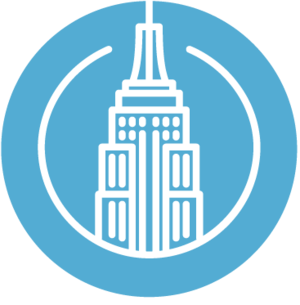How BlocPower’s Donnel Baird developed a new model for green cities
Donnel Baird, Co-founder and CEO, BlocPower
“I one hundred percent believe that the solutions to the climate crisis are inextricably woven with solutions to wealth equality,” says Donnel Baird, the founder and CEO of BlocPower. The startup, which was founded in 2014, sources and implements sustainable building upgrades. But simply greening buildings is just the beginning of that work.
In the eight years since its inception, BlocPower has produced a dizzying number of large-scale initiatives across the country: In 2022, the company partnered with the City of Ithaca, New York to retrofit its entire building stock by 2030, the first electrification initiative of its kind in the United States. That same year, it announced a plan to bring a similar program to Menlo Park, California, and has since launched decarbonization efforts in Denver, Oakland, San Jose, and other cities. Most recently, through a new partnership with the New York City Mayor’s Office, BlocPower will train 3,000 workers for jobs in the local green economy. The startup has also recently expanded an AI-powered program to assist urban planners in their own sustainability initiatives, drawing on large swaths of data to model every building in the United States.
BlocPower’s work is deeply rooted in Baird’s own background, first as a resident of a dilapidated Brooklyn building and later as an organizer working towards decarbonization and sustainable job growth. “Setting a vision, organizing resources and people, and navigating obstacles were all core skills we develop as community organizers,” Baird says.
Baird joined Caroline Hyde, co-host of “Bloomberg Technology” on Bloomberg Television, at Bloomberg’s Global Headquarters in New York City on Thursday, September 28, 2023 for a conversation as part of the Cornell Tech @ Bloomberg Speaker Series. He shared lessons learned from his years as an organizer, how a mid-pandemic pivot saved his business, and why he thinks “AI for the sake of AI is not enough.”
Watch the full discussion:
An intimate knowledge of unsustainable housing
A child of Guyanese immigrants, Baird grew up in what he characterizes as a neglected building in the Bedford-Stuyvesant neighborhood of Brooklyn. The heat and hot water almost never worked, he says, and his parents worked nights. When he was a child, Baird was taught to heat the apartment using the oven. But his parents always reminded him to keep a window open to prevent CO2 poisoning. Later, as a climate activist, he’d walk his old neighborhood in the dead of winter and see entire apartment buildings with their windows open. “We’re just burning fossil fuels,” he says, “and we’re paying for those fossil fuels, and the energy is just floating out the window.”
Following his graduation from Duke University, Baird returned to Brooklyn and spent four years as a community organizer, eventually working with the Obama administration’s Department of Energy to hire young people from low-income areas like Brownsville to help make their neighborhood buildings greener. “We wanted to invest government money to create a freestanding green building industry in America, but we couldn’t quite get it to work,” he says. After a few years, Baird decided to reach those goals another way, and enrolled in Columbia Business School.
BlocPower was founded during Baird’s last semester at Columbia. “Wealthy buildings and low-income buildings burn the most fossil fuels per square foot,” he says. “We figured as a new startup, our niche was going to be to focus on the financially underserved communities.”
Bringing “bleeding-edge hardware” to existing projects
“I was really surprised to see how many skills from political organizing and community organizing applied to being a founder,” says Baird, who considers his relationship with other founders as crucial as the ones he has with investors.
When Baird spoke to Hyde, he’d just gotten off the plane from New Orleans, where BlocPower had signed a software contract with the city to figure out how to green the city’s buildings and plan towards climate resilience. The city is also running out of clean water. BlocPower is sourcing solar photovoltaic technology to power the process of capturing air to turn it into clean water. “We’re a platform that brings innovative, bleeding edge hardware into existing buildings and existing infrastructure projects,” he says.
In the first few years of BlocPower’s operations, the company greened around 670 apartment buildings in Brooklyn. Large luxury apartment buildings burn a lot of energy, according to the founder, but low income developments are also particularly inefficient: “They’re old and leaky,” he says. “They’re neglected because the folks who live there can’t afford to do sustainability upgrades or even basic maintenance. You may have multiple families crammed into one apartment. You may have people who are unemployed and are at home all day using energy.”
Despite these early projects, BlocPower was running out of money in early 2020 — a particularly bad time to run low on funds, as the pandemic shut down most of the country. “But whether or not the company survives, you need to remain focused on the fact that there’s a global pandemic, and people are dying left and right,” Baird says. “So what are the ways that you can be of service?”
As it turned out, the clean energy hardware BlocPower installed across New York was easy to rig into a series of data streams. The company connected a number of its buildings to the internet, allowing 10,000 people across the Bronx to access an essential utility for work and school.
“Out of that work,” says Baird, “some of our VCs called us and said they wanted to offer us a term sheet to do our Series A. So we lived to fight another day.”
And so BlocBower did. The company subsequently announced a second fundraising round of $150 million in March of 2023, bringing the total capital the firm has raised to over $250 million.
An AI model to democratize green engineering solutions
BlocPower recently bought and assembled a dataset that covers every building in the United States, creating a digital model of all 125 million buildings. The team then ran those models through an open source thermodynamic energy program from the Department of Energy. This software tool allows BlocPower to predict what kinds of green improvements will be most effective and financially viable, as well as how those improvements might impact pollution and energy bill reductions. Jeff Bezos and his partner Lauren Sanchez donated $5 million in Amazon stock to help develop this platform.
On top of this work, the team then built AI models to recognize patterns and anomalies. Eventually, Baird hopes, they’ll be able to integrate language models that will allow people without an engineering background to better understand these highly technical datasets. “We intend to use these AI models that we’ve been building to translate to real-world emissions. AI for the sake of AI is not enough,” he says.
“BlocPower was built out of the experience of a poor, first-generation kid growing up in a low-income neighborhood with no heating system,” says Baird. Now, the company is rolling out to 30 cities, where it aims to help municipalities replace their heating systems and attempt to lower greenhouse gas emissions by 30 percent. “The lived experiences of different kinds of Americans are really important to developing a broad range of solutions that we must apply to the climate crisis.”
This article was originally published by Tech at Bloomberg.












